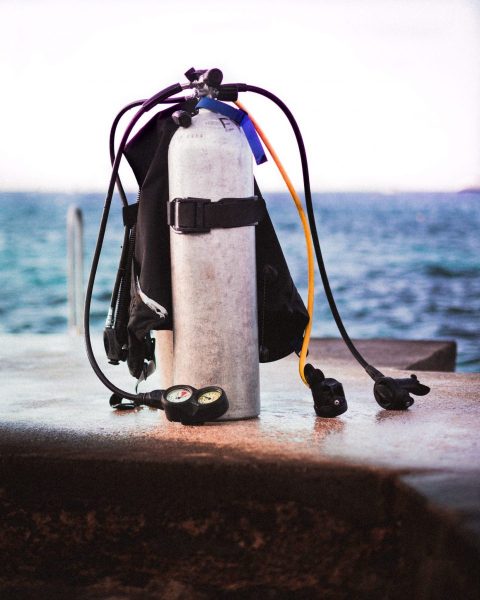

Scuba Cylinder Hydrostatic Testing and Visual Inspections
What is the lifespan of a scuba cylinder and how often do they require cylinder maintenance?
Though made with either durable aluminum or steel, cylinders are exposed to both saltwater and pressure, producing greater wear than would typically occur above water. When exposed to the elements, metal begins to decay like other natural materials. Rusting through oxidation, corrosion, fire damage, and dents because of excessive pressure must be prevented through regular maintenance. For these reasons, regular visual inspections and hydrostatic testing is necessary to uphold the integrity of the cylinder so that it is safe to be refilled with packaged breathing gases for the next dive.
Visually Inspecting Scuba Tanks
The lifespan of the average aluminum scuba tank is upward to 15 years, undergoing hydrostatic testing at most every 5 years. While the cylinder manufacturer will conduct the first hydrostatic test, a local atmospheric gas supplier can perform this regular maintenance as well. Visual inspections, however, will be covered with greater frequency to identify more obvious damage.
Annual visual inspections by trained technicians will scan scuba tanks inside and out – including the valves – to observe any signs of dents, cracks, or corrosion. A snake light is used to investigate the inside of the cylinder. Most tanks will fail a visual inspection before they fail a hydrostatic test. A visual inspection will always be done at the time of a hydrostatic test.

Hydrostatic Testing Scuba Tanks
Hydrostatic testing essentially stretches the scuba tank to assess its durability. Any leaks in the tank will be detected, which has the potential to save a diver’s life.
So, what does this process look like? Hydrostatic testing uses specialized equipment to pressurize the tank up to 5000 psi, filling it over its typical capacity with water. To guard the technician from the hazards of an over pressurized cylinder, it is enclosed in an armored chamber with water. In the hydrotest chamber, the scuba tank is pressurized. The metal then flexes under stabilization, and if the cylinder is too fatigued, it will crack rather than reverting to its original shape with minimal permanent expansion. Displaced water from the chamber – called total expansion – is measured and the pressure is released. The permanent expansion of the cylinder is subtracted from the total expansion of displaced water, and the technician is left with a number called elastic expansion, which determines whether the tank passes or fails. The small amount of elastic expansion must remain within the spectrum of DOT (Department of Transportation) requirements by federal law before it can be sent back to the customer.
Above all, it is the responsibility of the diver to know whether a tank is up to date on its visual inspections and hydrostatic testing prior to a dive.
Hydrostatic Testing and Visual Inspections in the Rocky Mountains
For local dive shops, landlocked divers, and those looking to get scuba certified, clear representation of visual inspections and hydrostatic testing is essential to the integrity of each diving gas cylinder. At Rocky Mountain Air Solutions, our trained technicians have the knowledge and technology to perform thorough inspections that ensure each scuba tank is up to par with DOT requirements, free from leaks, or any signs of visible damage that could interfere with a dive.
The experts at our hydrostatic testing facility in Salt Lake City are well equipped to answer your questions and to provide cylinder maintenance with flawless dependability in the Rocky Mountain region.



